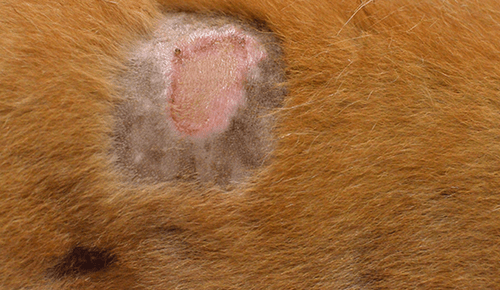
Ear mites on a cat. What to do?
How does the infection occur?
Ear mites are easily transmitted through direct contact with sick animals, and are most susceptible to infection in kittens. The tick is able to survive in the external environment without a “host” for up to 12 days – this depends on the temperature and humidity of the air, therefore an indirect method of infection through care items is also possible.
Main symptoms
Symptoms are usually very characteristic: severe itching and brown, coffee-ground discharge from the ears. In sick cats, scratching on the head and auricles can be found, sometimes skin lesions on the front paws and other parts of the body are observed.
In kittens, discharge from the ears may be slight and resemble a grayish coating; in some cats, itching may be mild.
Since ear mites cause inflammation of the skin of the ear canal (and any inflammation changes the microclimate of the skin), the initial infestation with ear mites is often complicated by secondary bacterial and fungal infections. With the development of a secondary infection, the color and nature of the discharge changes: an unpleasant odor or even purulent discharge appears.
Some cats may develop a hypersensitivity reaction to ear mites, resulting in severe inflammation and redness of the skin of the ear canal and scalp, swelling, and very severe itching. Since cats sleep curled up in a ball, mites can often be found on the skin in the tail and abdomen.
Diagnosis of the disease
Ticks can be detected by examining the ear canal with an otoscope or by examining the contents (discharge) of the ear canal under a microscope. When complicated by a secondary infection, the number of ticks decreases, so it becomes more difficult to detect them in scrapings.
Treatment
Treatment consists in the use of special preparations against ticks, the careful cleansing of the external auditory canal from secretions and the elimination of secondary infection.
It is important to know
Even after removing the tick, the secondary infection remains and requires additional treatment. Since the tick is highly contagious, all susceptible animals in the household should be treated at the same time.
Prevention
At risk are cats and cats that go out for a walk or go to the country with their owners, as well as animals that are used for breeding or participate in exhibitions. Therefore, during the summer season (or year-round), monthly preventive treatment is recommended, for example, with Stronghold for cats, it will also protect the animal from fleas and scabies mite infection.
Discuss the choice of drug for prophylaxis with a veterinarian, do not use several drugs at the same time.
The article is not a call to action!
For a more detailed study of the problem, we recommend contacting a specialist.
Ask the vet
23 2017 June
Updated: July 6, 2018





